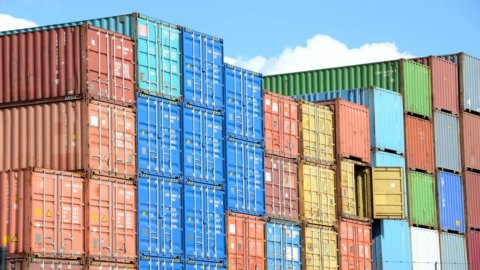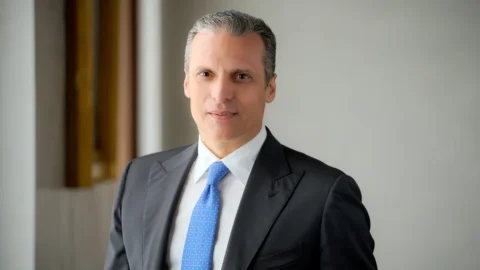La commissione Europea mette le carte in tavola e dopo settimane di attese e polemiche lancia un recovery fund da 750 miliardi di euro, composto da 500 miliardi di sovvenzioni a fondo perduto e 250 miliardi di prestiti. In Italia, il Paese più colpito dalla pandemia di coronavirus che ha travolto l’Europa e il mondo, dovrebbero finire 82 miliardi di sovvenzioni e 91 miliardi di prestiti, la cifra più alta in assoluto.
Il piano che von der Leyen ha presentato al Parlamento europeo, denominato “Next Generation Eu”, supera le cifre contenute nell’accordo franco-tedesco e sembra ignorare le recriminazioni degli Stati rigoristi del Nord che pochi giorni fa hanno ribadito la propria contrarietà a qualsiasi tipologia di finanziamento a fondo perduto. In gioco però, secondo molti osservatori, c’è la sopravvivenza della stessa Unione Europea e la presidente della Commissione, Ursula von der Leyen, manda un messaggio chiaro a tutti: il coronavirus non causerà il tramonto della Ue, ma al contrario dovrà diventare un’opportunità per rafforzare l’integrazione europea e combattere nazionalismi e populismi. “La crisi ha effetti di contagio in tutti i Paesi e nessuno può ripararsi da solo. – ha detto von der Leyen – Un’economia in difficoltà da una parte indebolisce una forte dall’altra. Divergenze e disparità aumentano e abbiamo solo due scelte: o andiamo da soli, lasciando Paesi e regioni indietro, o prendiamo la strada insieme. Per me la scelta è semplice, voglio che prendiamo una strada forte insieme”:
RECOVERY FUND: TUTTE LE CIFRE
Come detto, ammonta a 750 miliardi di euro il fondo per la Ripresa messo sul piatto dalla Commissione europea per aiutare gli Stati membri alle prese con la crisi economica innescata dal Coronavirus. La cifra era già stata anticipata dal Commissario agli Affari Economici, Paolo Gentiloni, che su Twitter ha parlato di “svolta europea per fronteggiare una crisi senza precedenti”.
Il nuovo strumento, che sarà associato al bilancio comunitario 2021-2027, distribuirà 500 miliardi di fondi che non avranno bisogno di alcun rimborso, mentre ulteriori 250 milioni di euro arriveranno ai vari stati sotto forma di prestiti da rimborsare sul lungo termine, probabilmente a partire dal 2027, e a tassi contenuti.
Complessivamente gli aiuti europei per la ripresa arriveranno a “2.400 miliardi” ha spiegato von der Leyen, sottolineando che “le proposte più coraggiose sono quelle più sicure”. Secondo quanto indicato dalla presidente dell’Esecutivo Ue, ai 750 miliardi del recovery fund si aggiungeranno i 1.100 miliardi di bilancio pluriennale Ue, il Qfp, “riveduto a 1.100 miliardi, per un totale di 1.850 miliardi” di euro. A queste cifre si sommeranno infine i 540 miliardi provenienti dalle misure già approvate: Mes light, Sure per la disoccupazione e fondi Bei.
RECOVERY FUND: COME FUNZIONERÀ
Un tassello fondamentale della proposta dell’Esecutivo Ue riguarda il meccanismo di finanziamento del recovery fund. Il soldi arriveranno da emissioni obbligazionarie gestite dalla stessa Commissione. I bond avranno scadenze diverse, e saranno rimborsati entro il 2058 e non prima del 2028.
I detentori dei titoli saranno rimborsati tramite nuove risorse che l’Ue reperirà tramite la plastic tax, nuove tasse sul digitale e sull’’ambiente.
RECOVERY FUND: ALL’ITALIA CIRCA 173 MILIARDI
Secondo le prime previsioni, l’Italia potrebbe ricevere circa il 20% dello stanziamento complessivo, in qualità di “Paese più colpito” dalla pandemia di coronavirus e dalla conseguente recessione.
In cifre parliamo di 81,807 miliardi di euro di sovvenzioni a fondo perduto e 90,938 miliardi di prestiti a lunga scadenza. In totale si arriva dunque a 172,7 miliardi di euro. Tra le Nazioni che riceveranno aiuti cospicui c’è poi la Spagna, che in base ai calcoli potrebbe arrivare a 77 miliardi di sovvenzioni e 63 di prestiti. In ogni caso gli importi definitivi dipenderanno dalla domanda.
RECOVERY FUND: COME SI POTRANNO USARE I SOLDI
Il denaro che arriverà da Bruxelles potrà essere utilizzato per rafforzare il sistema sanitario, rilanciare e modernizzare l’economia dei singoli Stati, guardando soprattutto all’ambiente e al digitale in linea con il Green New Deal Ue. Ogni Paese, secondo quanto anticipato dal vicepresidente dell’Esecutivo comunitario, Valdis Dombrovskis, dovrà presentare un piano nazionale che sarà valutato dalla Commissione.
COMINCIA LA BATTAGLIA
Quella della commissione Ue è una proposta. Da domani, il piano dovrà essere negoziato dagli Stati membri per poi passare al vaglio del Parlamento Ue. L’appuntamento cruciale sarà il Consiglio europeo in programma per il prossimo 18-19 giugno, anche se molti osservatori preannunciano già un secondo vertice a luglio. La trattativa non sarà semplice. Si prefigura infatti una battaglia feroce per superare la ritrosia degli Stati rigoristi del Nord su finanziamenti a fondo perduto, mutualizzazione del debito e meccanismo di ripartizione dei fondi.
Non a caso, è già arrivata una prima reazione negativa da parte dei Paesi Bassi: “Le posizioni sono lontane e questo è un dossier che richiede l’unanimità, quindi i negoziati richiederanno tempo. È difficile pensare che questa proposta potrà essere il risultato finale di quei negoziati”, fanno sapere fonti diplomatiche olandesi.





